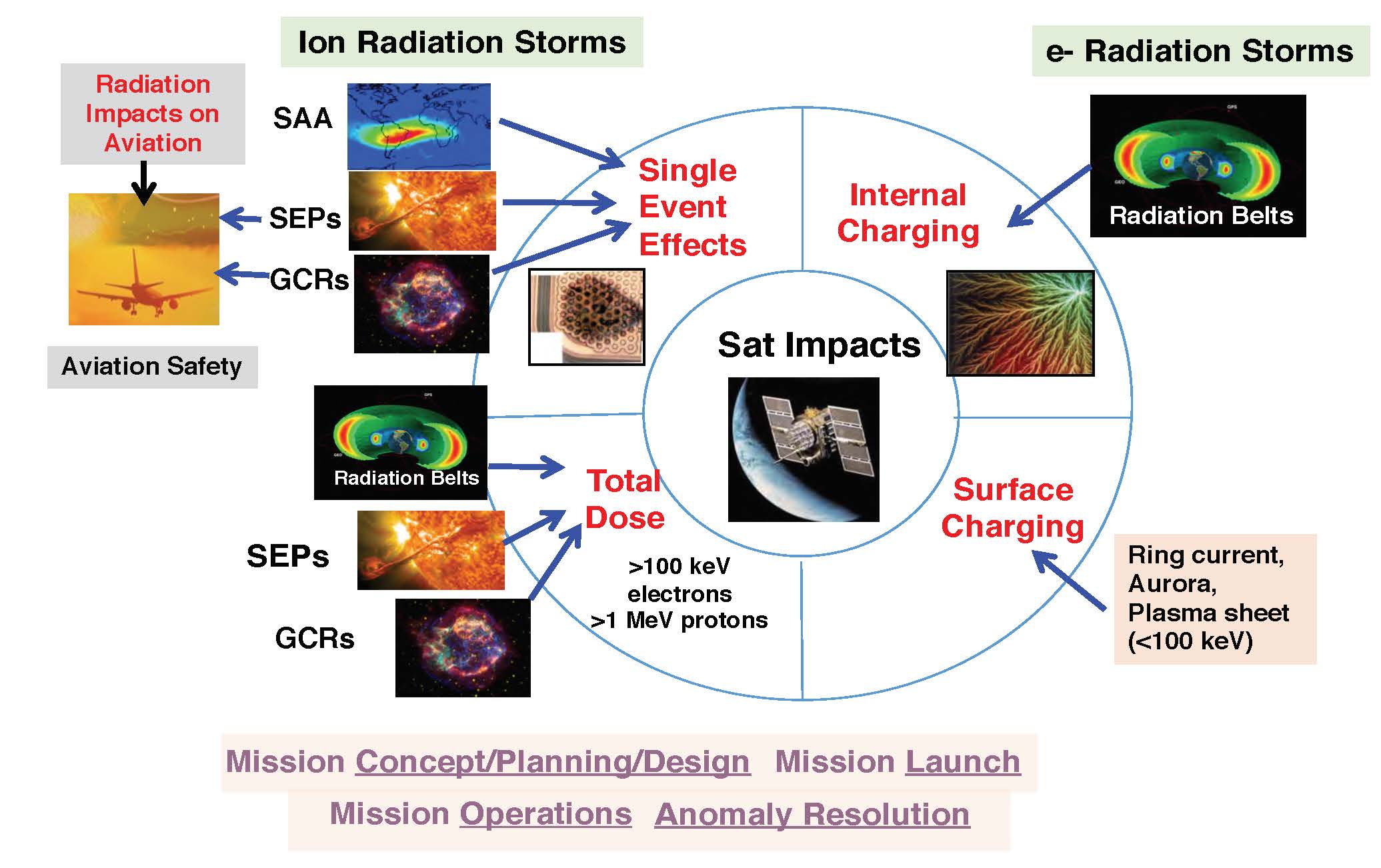(Aero)space assets functions
Moderator:
Yihua Zheng
Space assets (including aircraft) are subject to an environment consisting of different particle populations that often evolve dynamically over time and space, and potentially bringing about deleterious effects on spacecraft electronics and/or life in space (e.g., Feynman and Gabriel, 2000). Particles across a broad energy range contribute to satellite impacts, which include cold, dense and hot electrons from a few eV to 10s keV that could lead to surface charging, energetic electrons that are above a few hundred keV possibly leading to internal charging, SEPs, GCRs, and trapped inner belt protons/ions that are sources for single event effects on spacecraft electronics (e.g., O’Bryan et al., 2009) and avionics (e.g., Dyer and Truscott, 1999; Normand, 1996). In addition, non-charged particles including UV radiation (photons), energetic neutrons, atomic oxygen, and neutral atmosphere could pose various hazards. Energetic protons, electrons, heavy ions and neutrons can lead to total dose effects over time. Micrometeoroids and orbital debris are potential hazards for spacecraft as well.
The primary source of radiation hazards at aviation altitudes are from GCRs and SEPs. While ionizing radiation from GCRs and SEPs pose health consequences/risks to airline passengers and crews (human in space in general), Single Event Effects on avionics from high-energy particles and low-energy, thermalized neutrons (via their interactions with nuclei inside avionic systems) are also concerns for aviation.
Relevant Clusters
- Surface Charging -- G3, G1, H1, H2, S2, S3
- Internal Charging -- G3, G1, H1, H2, S2, S3
- Single Event Effects -- G3, H3, S3
- Total Dose -- G3, G1, H3, S3
- Aviation Safety -- G3, H3, S3
in the order of most relevance.

